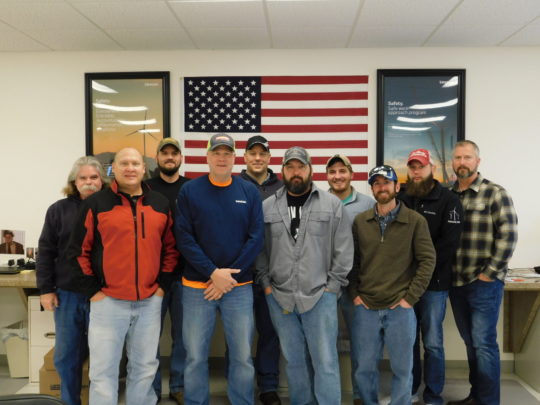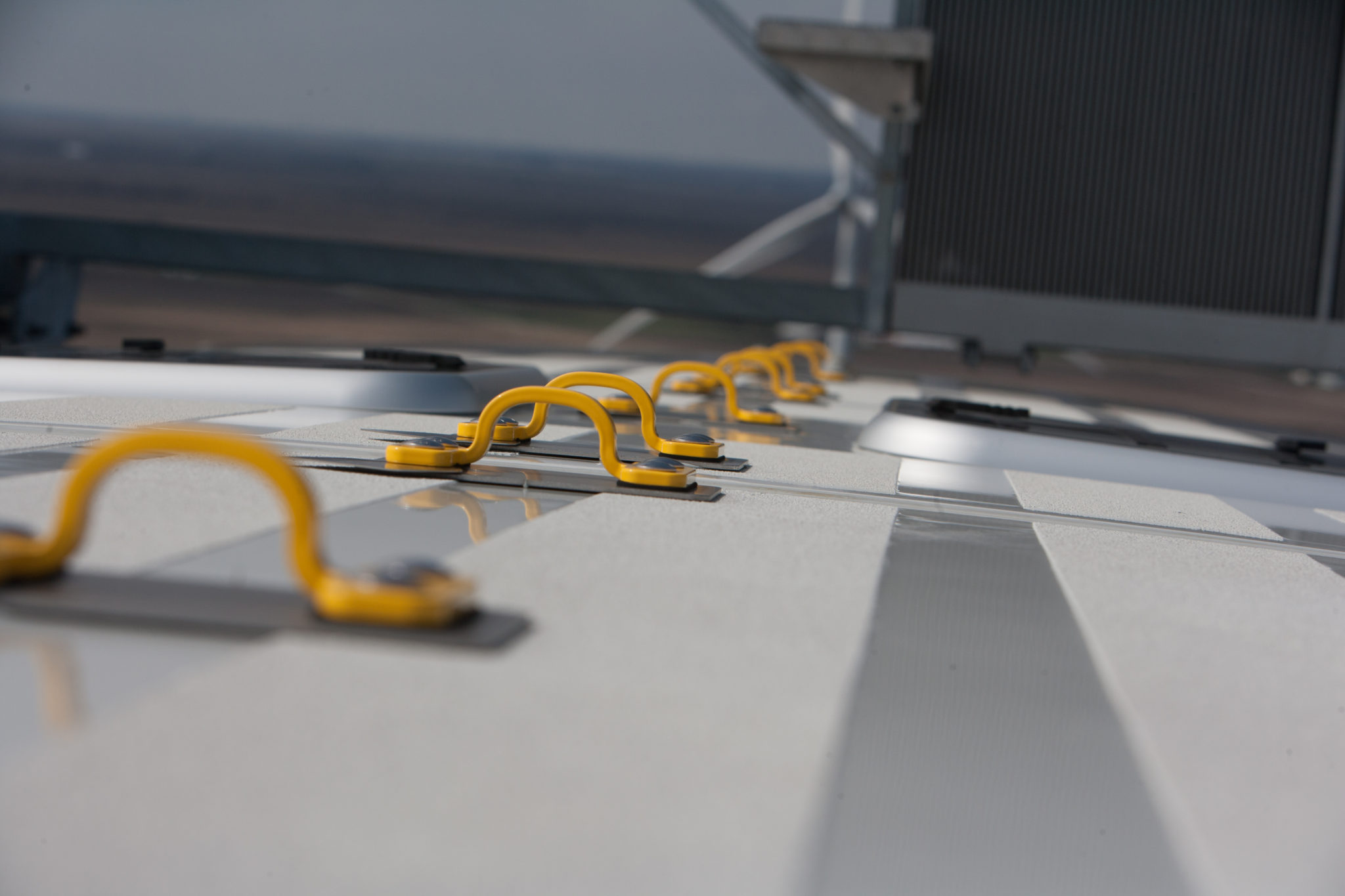1,000 Injury-Free Days at Hoopeston Wind
Apex reaches a significant safety milestone.

Even in the most tranquil of offices, workplace injuries are not an uncommon occurrence. So when a team of colleagues is able to work collaboratively and proactively to prevent injuries in a sometimes unforgiving, industrial work environment, it speaks to shared values and clear lines of communication.
The Hoopeston Wind facility, which covers thousands of acres of working farmland in Vermilion County, Illinois, reached a major milestone late in 2018: 1,000 straight days without an injury. No pinches, no falls, no stubbed toes.
The site team, which comprises Apex Clean Energy and Vestas America personnel, exemplifies an unfaltering commitment to safety. The workers manage the full spectrum of day-to-day operations, which at times involve situations with potential for significant injury. The safety standards in place—and, more important, the buy-in from all those who enter the site—have ensured for the past three years that everyone leaves just as they come.
“To achieve a zero-incident safety culture in a blended environment involving employees of two companies, as well as guests to the site, requires great intention and constant communication,” says Curtis Radke, Hoopeston facility manager. “Apex and Vestas partner to maintain and grow this culture, and our success is evident in crossing this milestone of 1,000 injury-free days.”
A Renewed Commitment Every Day
Each morning at the Hoopeston Wind farm begins in the site’s Operations and Maintenance building. At six o’clock, among the spare parts, equipment, and forklift, one can always find a group of rookie and veteran technicians alongside their managers. Like the warm-up for a boutique “boot camp” workout, the team stretches to classic tunes and discusses operational plans for the day. The group reviews specific safety concerns and raises topics that may be relevant on the job site.
“That’s what leadership at every level of the team looks like, when titles matter much less than the simple dedication of individuals who truly care about the well-being of their fellow workers.”
A few of the site team’s daily tasks include climbing towers to perform repairs, switching high-voltage circuits in the substation, managing crane work, and installing exterior turbine components at great heights. Periodically, groups of guests also visit for tours. These groups vary from elected officials to community members and students interested in clean energy, with similarly diverse ages and levels of mobility. All participants receive a safety briefing and are required to wear personal protective equipment on the site.
“Wind projects in general operate under hazardous conditions,” says Neil James, a 35-year industry veteran and vice president of operations, maintenance, and monitoring for Apex Clean Energy. “Hoopeston Wind is a perfect example of a site where those conditions are mitigated by a rigorous safety program that empowers anyone on the team to stop work if a potential hazard is identified. That’s what leadership at every level of the team looks like, when titles matter much less than the simple dedication of individuals who truly care about the well-being of their fellow workers.”
Apex Health and Safety Manager John Boyle builds on proven safety principles and practices, working continuously to educate employees across the organization. “Whether our team is out in the field in the nearly two dozen states where Apex has projects under development or management, or in our Charlottesville or Minneapolis offices, we are all on the same page regarding safety as a core value of our business,” says Boyle. “Through required safety trainings, tips at company-wide weekly briefings, and a robust set of policies and procedures, we are constantly seeking opportunities to improve.”
“It’s a culture of trust,” Boyle continues. “Without trust, there is no feedback and no buy-in. The Hoopeston team embodies our culture, and its performance over the past 1,000 days says it all.”

